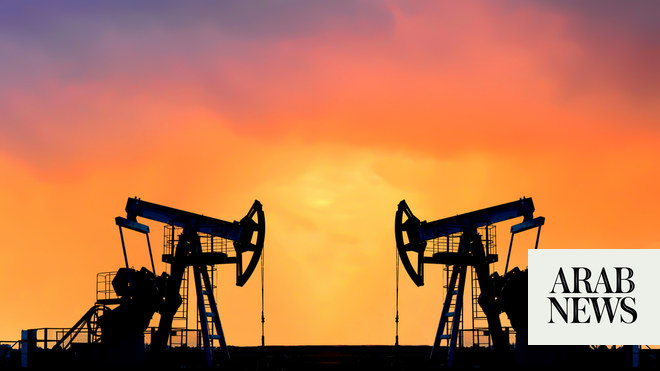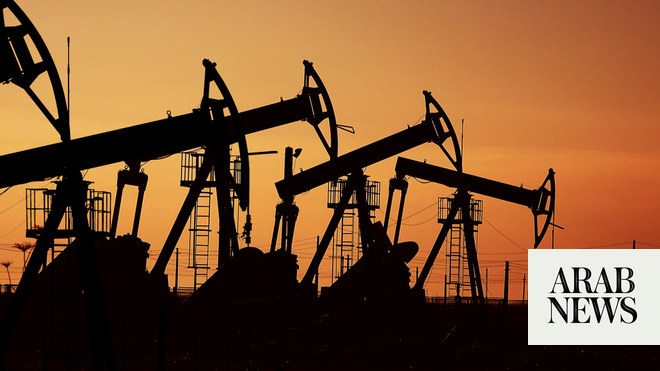
Despite the recent slump in oil prices, forecasts have edged down by less than $5 per barrel compared with the last annual survey conducted at the start of 2018
Brent prices in 2019 are expected to average $65 per barrel, unchanged from surveys in 2016, 2017 and 2018
LONDON: Oil prices are expected to oscillate close to current levels well into the next decade, averaging around $65-$70 per barrel through 2023, according to an annual survey of energy professionals conducted by Reuters.
Despite the recent slump in oil prices, forecasts have edged down by less than $5 per barrel compared with the last annual survey conducted at the start of 2018, and have changed little over the last three years.
Long-term expectations for the average price of Brent crude remain anchored around $70 per barrel, close to the $72 average realized in 2018.
The results are based on the responses from just over 1,000 energy market professionals to a poll conducted between Jan. 8 and Jan. 11.
Brent prices in 2019 are expected to average $65 per barrel, unchanged from surveys in 2016, 2017 and 2018.
In 2020, Brent is also expected to average $65 per barrel, revised down by $5 or less compared with prior surveys.
Far fewer respondents now see any risk of prices spiking to $100 or more by the end of the decade as a surge in US shale output has eased fears of supply shortages.
The proportion of respondents expecting prices to average more than $90 in 2020 has fallen to just 3 percent this year, from 13 percent at the time of the 2016 survey.
By 2023, prices are still expected to average $70, with most forecasts between $60 and $80, which suggests most energy professionals think there will be enough production developed at this level to meet consumption growth.
Among survey respondents, 26 percent are involved directly in oil and gas production (exploration, drilling, production, refining, marketing and field services).
Most of the rest work in banking and finance (18 percent), research (9 percent), professional services (9 percent), hedge funds (8 percent) and physical commodity trading (6 percent).
The results from respondents involved directly in the oil and gas industry were similar to those in other sectors.
Oil and gas insiders and those outside the industry have more or less the same outlook for prices in 2019 and 2020.
Insiders are marginally more bullish than outsiders on prices, but the difference is just $1.50 per barrel in 2019, rising to $3.50 by 2023.
Respondents exhibit more certainty about prices this year and next compared with subsequent years, which is natural given that uncertainty tends to increase over longer-time horizons.
Responses for 2019-2020 are tightly clustered, while expectations for 2021-2023 exhibit more variation. Even so, few respondents expect average prices to fall below $55 or rise above $85 in the next five years.
The level of uncertainty, as measured by the standard deviation of responses, has remained constant over the last four surveys.
Short-term uncertainty has remained little changed, with the standard deviation of responses for the first forecast year at $8 in 2019, compared with $7 in 2018, $6 in 2017 and $8 in 2016.
Long-term uncertainty has also held constant, with the standard deviation of forecasts for the fifth year at $19 in 2019, compared with $18 in 2018, $18 in 2017 and $20 in 2016.
There is no significant difference between oil and gas industry insiders and outsiders, with the level of uncertainty similar in both groups for both short-term and long-term prices.
Overall, most respondents expect the oil market to remain comfortably supplied in the foreseeable future, with prices oscillating around the current level or a little higher and relatively moderate volatility.












